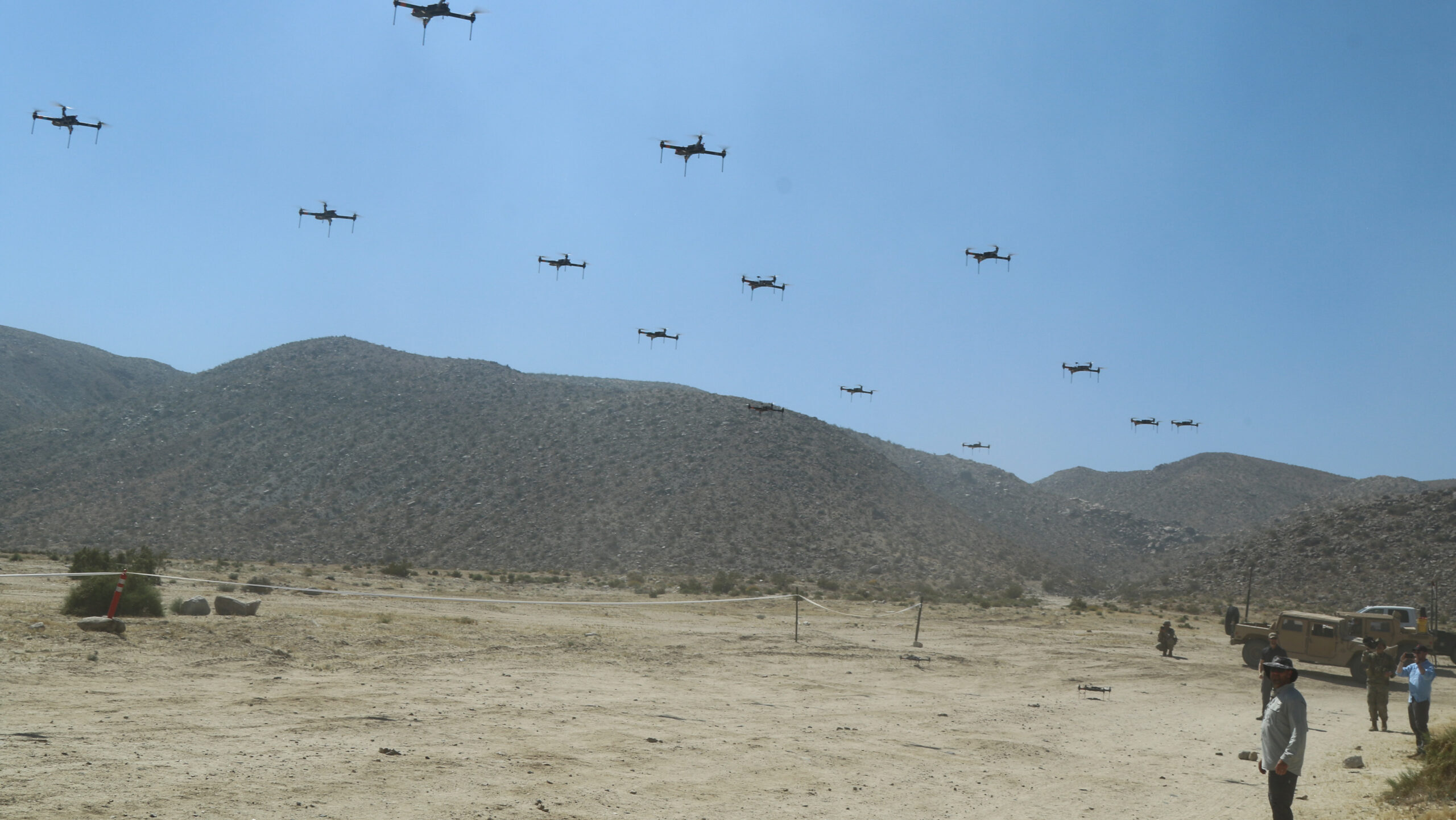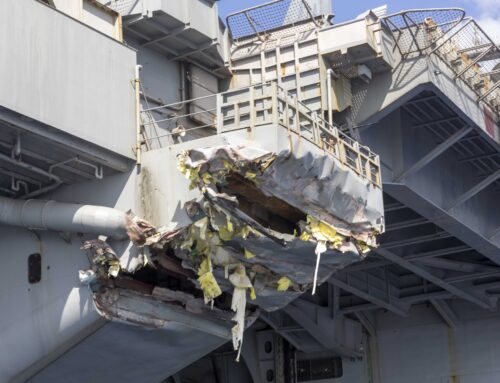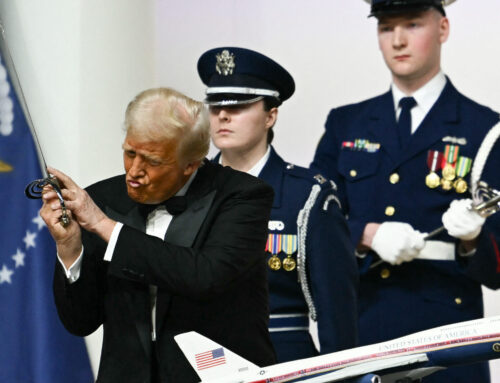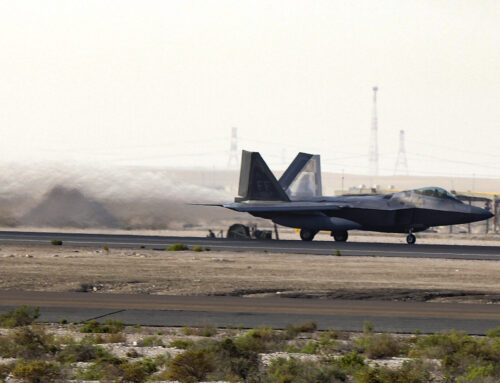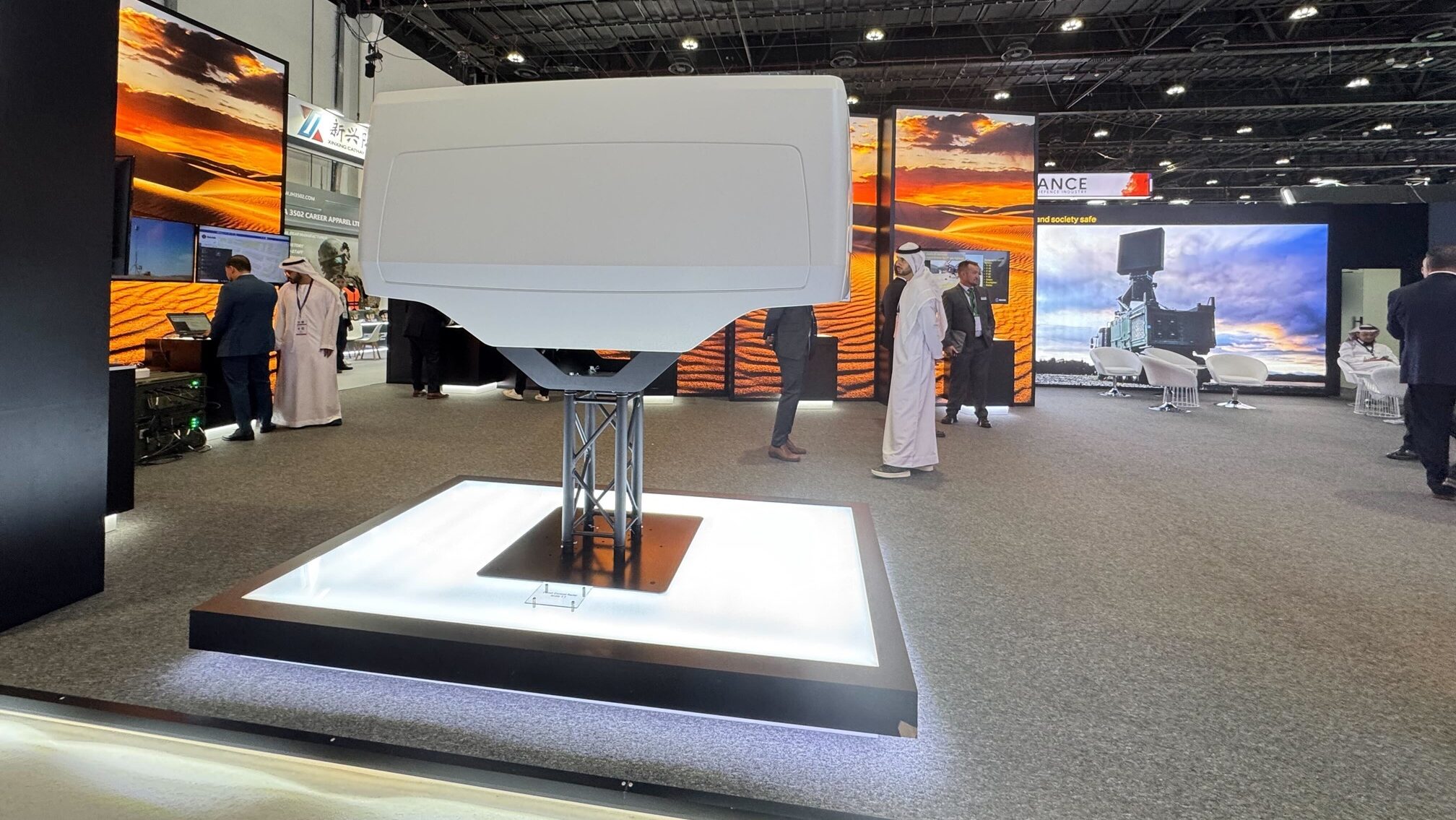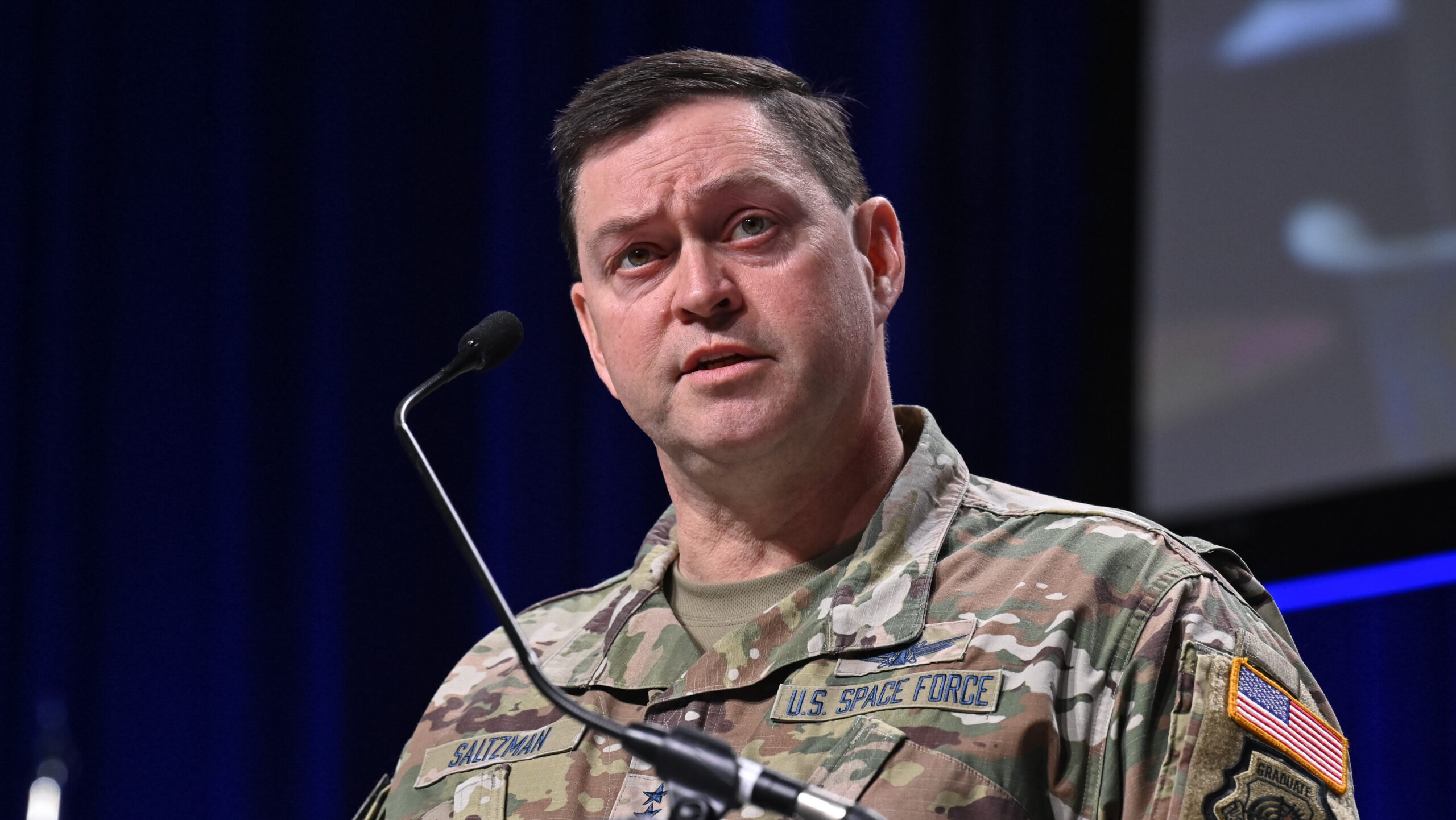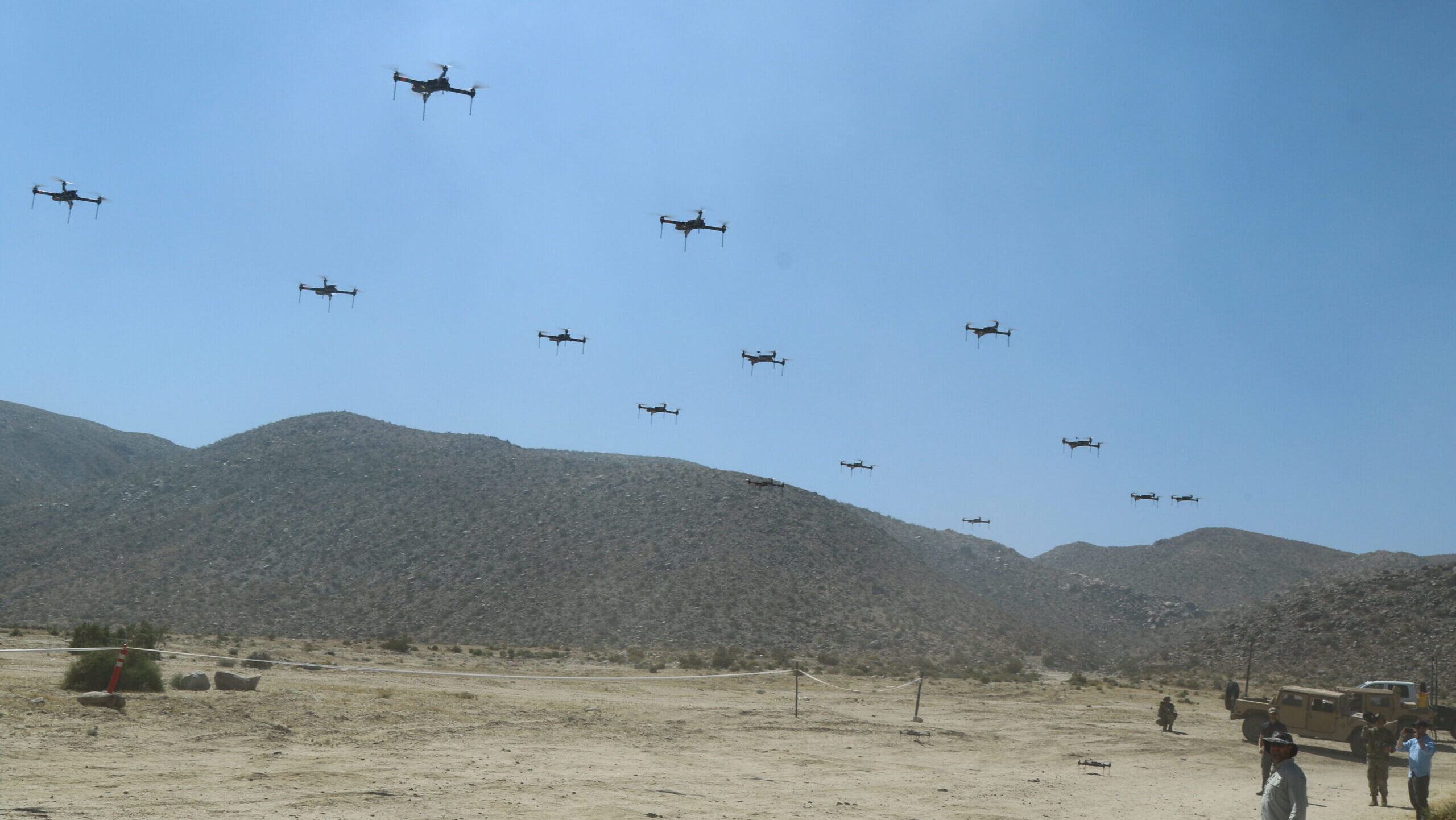
The 11th Armored Cavalry Regiment and the Threat Systems Management Office operate a swarm of 40 drones to test the rotational units capabilities during the battle of Razish, National Training Center on May 8th, 2019. (US Army/ Pv2 James Newsome)
WASHINGTON — Pentagon officials are crafting a plan to expand the United States’s missile defense system under the “Iron Dome for America” initiative, and grappling with whether new tech to down aerial drones should also be included, according to a two-star Army general.
“There’s talk about does that involve counter-UAS [unmanned aerial systems] or will counter-UAS be established [separately],” Maj. Gen. David Stewart told Breaking Defense earlier this month.
Stewart — dual hatted as the director for the Joint Counter-Unmanned Aircraft Systems Office and Army fires — said he and his team are working with Pentagon leaders and other agencies to determine just what route to take.
In late January, President Donald Trump issued the Iron Dome for America executive order calling for greater investments for a multilayered homeland air defense system, including a requirement for the development of space-based interceptors. That order started a 60-day clock for Secretary of Defense Pete Hegseth to develop a plan to defend the homeland against “ballistic, hypersonic, advanced cruise missiles, and other next-generation aerial attacks from peer, near-peer, and rogue adversaries.”
It is the term “other advanced aerial attacks” in the EO, that Stewart said has the department working through if C-UAS should be included.
“As we take on Iron Dome for America … the intent is really to [be as] cutting edge as we possibly can as a nation,” he said.
“What do we have right now that gets out [to] the cutting edge [and] is that the right capability, versus what do we need to invest in,” Stewart later added.
The proliferation of aerial drones on the battlefield has been pushing the services to focus on new counter-drone weapons for years to varying degrees of success. More recently, though, there have been a plethora of reports of drone sightings and incursions on military installations throughout the US.
“I have no doubt that there’s significantly more incursions that we don’t see, either with a system or with our eyeballs,” Gen. Gregory Guillot, the commander of US Northern Command and North American Aerospace Defense Command (NORAD), told reporters in October 2024.
At the time, the four-star general speculated that those events are gaining more attention due to the spread of systems that are able to detect and track UAS with greater “fidelity.”
And while drone sightings at locations with highly classified programs have prompted questions of if adversary nations are behind the operations, Guillot said that he has not yet seen evidence of any “organized or unorganized foreign nexus” and that the “overwhelming majority of them are probably local hobbyists that are just flying too close to the base.”
Regardless of if many of those incidents are from hobbyists or not, Stewart said the new administration is taking the potential threat “very seriously” and pushing the DoD and other entities like the Department of Homeland Security, the Federal Aviation Administration and local law enforcement to work together.
But red tape abound.
US regulations and policy, for example, limit just which C-UAS systems can be used on the homeland. While there are expectations depending on the location, by and large, only “low-collateral effectors” are used to down drones inside the continental US — think jamming or spoofing the radio frequency link between the controller and the drone, a net to capture the drone or using one drone to ram the other drone.
This has meant that the military services have had to find innovative ways to test out new C-UAS against real threats. When the Army wanted soldier feedback on its new Stryker-mounted 50-kilowatt laser weapons against drones last year, it sent the four prototypes into the Middle East. In a similar vein, the service is also planning to test new high-powered microwave C-UASs over there.
“The full breadth of capability is not authorized to be used in the United States, in the homeland,” Stewart said.
Ultimately, though, that may need to change under a more comprehensive C-UAS plan that is either part of the Iron Dome for America umbrella or a standalone.
“There is no single silver bullet,” Stewart added. “We have to look at is a layered approach that we look at both really exquisite capability to get after a threat, but also trying to get after more affordable capability, and just trying to make sure that we use the right tool and provide the warfighter the right tools to get after this mission.”


